Comparing two sheets in Excel is a common task for data analysis, financial reporting, and various other applications. At COMPARE.EDU.VN, we provide comprehensive guides on “How To Compare 2 Sheets In Excel” offering multiple techniques to identify differences effectively. This article explores methods ranging from side-by-side viewing to advanced comparison tools, ensuring you find the perfect solution for your needs, improving data reconciliation and spreadsheet comparison.
1. Comparing Excel Sheets: Side-by-Side Viewing
This method is ideal for smaller workbooks or when a visual comparison is sufficient. It involves opening two Excel windows and arranging them side by side to manually identify differences.
1.1. Comparing Two Excel Workbooks Side by Side
This approach is useful when you have two separate Excel files, such as monthly sales reports, and want to compare them simultaneously.
- Open the Workbooks: Start by opening both Excel files you want to compare.
- View Side by Side: Go to the View tab, locate the Window group, and click the View Side by Side button.
- Arrange Windows: Excel displays the two windows horizontally by default. To arrange them vertically, click the Arrange All button in the Window group and select Vertical.
- Synchronous Scrolling: Ensure that the Synchronous Scrolling option is enabled to scroll through both worksheets simultaneously. This option is usually turned on automatically when you activate the View Side by Side mode.
1.2. Arranging Multiple Excel Windows
If you need to compare more than two Excel files, follow these steps:
- Open All Workbooks: Open all the Excel files you want to compare.
- View Side by Side: Click the View Side by Side button. A dialog box will appear, allowing you to select the files to be displayed alongside the active workbook.
- Arrange All: Alternatively, click the Arrange All button on the View tab and choose your preferred arrangement: tiled, horizontal, vertical, or cascade.
1.3. Comparing Two Sheets in the Same Workbook
Sometimes, the sheets you want to compare reside within the same workbook. Here’s how to view them side by side:
- Open New Window: Open your Excel file, go to the View tab, and click the New Window button in the Window group.
- Enable View Side by Side: Click the View Side by Side button to enable the side-by-side mode.
- Select Sheets: In the first window, select the first sheet, and in the second window, select the second sheet.
2. Comparing Excel Sheets for Value Differences Using Formulas
This method involves using Excel formulas to create a difference report, highlighting cells with different values. It’s a simple way to identify discrepancies in data.
- Open a New Sheet: Create a new, empty sheet in your Excel workbook.
- Enter the Formula: In cell A1 of the new sheet, enter the following formula:
=IF(Sheet1!A1 <> Sheet2!A1, "Sheet1:"&Sheet1!A1&" vs Sheet2:"&Sheet2!A1, "") - Copy the Formula: Drag the fill handle (the small square at the bottom-right of the cell) to copy the formula down and to the right, covering the entire range of cells you want to compare.
This formula compares the values in Sheet1 and Sheet2 and displays the differences in the new sheet. If the values are the same, the cell remains blank; if they differ, the cell shows the values from both sheets.
3. Highlighting Differences with Conditional Formatting
Conditional formatting allows you to highlight cells with different values using colors. This method provides a visual way to quickly identify discrepancies between two sheets.
- Select the Range: In the worksheet where you want to highlight differences, select all the used cells. Start by clicking the upper-left cell (usually A1) and press
Ctrl + Shift + Endto extend the selection to the last used cell. - Create a New Rule: On the Home tab, in the Styles group, click Conditional Formatting > New Rule.
- Use a Formula: Select “Use a formula to determine which cells to format” and enter the following formula:
=A1<>Sheet2!A1
ReplaceSheet2with the name of the other sheet you are comparing. - Format the Cells: Click the Format button and choose a color to highlight the different cells.
- Apply the Rule: Click OK to apply the conditional formatting rule.
4. Limitations of Basic Comparison Methods
While formulas and conditional formatting are useful, they have limitations:
- Value Comparison Only: They only compare values and cannot detect differences in formulas or cell formatting.
- Row/Column Sensitivity: Adding or deleting rows or columns in one sheet can lead to incorrect results.
- Sheet-Level Focus: They do not identify workbook-level structural differences like added or deleted sheets.
5. Compare and Merge Shared Workbook Copies
This feature is designed for collaborative environments where multiple users edit the same Excel file. It allows you to merge changes from different copies into a single workbook.
5.1. Preparing the Workbook
Before using the Compare and Merge feature, ensure the following:
- Share the Workbook: Click the Share Workbook button on the Review tab, in the Changes group. Select “Allow changes by more than one user at the same time.”
- Save Copies: Each user must save a copy of the shared workbook with a unique file name.
5.2. Enabling the Compare and Merge Feature
The Compare and Merge Workbooks command is not displayed by default. To add it to the Quick Access toolbar:
- Access Excel Options: Open the Quick Access drop-down menu and select More Commands.
- Select All Commands: In the Excel Options dialog box, choose All Commands from the “Choose commands from” drop-down menu.
- Add the Command: Scroll down to Compare and Merge Workbooks, select it, and click the Add button.
- Confirm: Click OK to save the changes.
5.3. Comparing and Merging Workbooks
- Open Primary Workbook: Open the original, shared workbook.
- Click the Command: Click the Compare and Merge Workbooks command on the Quick Access toolbar.
- Select Copies: In the dialog box, select the copies of the shared workbook you want to merge. You can select multiple copies by holding the
Shiftkey while clicking the file names.
5.4. Reviewing the Changes
To review all the edits made by different users:
- Highlight Changes: Go to the Review tab > Changes group and click Track Changes > Highlight Changes.
- Configure Highlighting: In the Highlight Changes dialog box, select All in the When box, Everyone in the Who box, clear the Where box, and select the “Highlight changes on screen” box.
Excel highlights the column letters and row numbers in red to indicate changes. Edits from different users are marked with different colors at the cell level. Hovering over a cell shows who made the change.
6. Third-Party Tools for Advanced Excel Comparison
For more comprehensive and efficient comparisons, consider using third-party tools designed specifically for comparing, updating, and merging Excel sheets and workbooks.
6.1. Synkronizer Excel Compare: A 3-in-1 Tool
Synkronizer Excel Compare is an add-in designed to compare, merge, and update Excel files.
Key Features:
- Identifies differences between Excel sheets.
- Combines multiple Excel files into a single version.
- Highlights differences in both sheets.
- Shows only relevant differences.
- Merges and updates sheets.
- Presents detailed difference reports.
Comparing Two Excel Files
- Run Synkronizer: Go to the Add-ins tab and click the Synkronizer icon.
- Select Workbooks: Select the two workbooks you want to compare.
- Select Sheets: Choose the sheets to compare. Synkronizer can automatically match sheets with the same names.
- Choose Comparison Options: Select the appropriate comparison option (e.g., Compare as normal worksheets, Compare as database).
- Select Content Types: Choose the content types to compare (e.g., cell values, formulas, formats, comments).
- Start Comparison: Click the Start button.
Visualizing and Analyzing Differences
Synkronizer provides summary and detailed difference reports:
- Summary Report: Shows all difference types at a glance.
- Detailed Difference Report: Provides specific details for each difference type.
Comparing All Sheets
If comparing multiple sheets, Synkronizer presents all matching worksheet pairs in the summary report.
Highlighting Differences
By default, Synkronizer highlights all differences:
- Yellow: Differences in cell values.
- Lilac: Differences in cell formats.
- Green: Inserted rows.
Updating and Merging Sheets
The merge function allows you to transfer individual cells or move columns/rows from the source to the target sheet.
6.2. Ablebits Compare Sheets for Excel
Ablebits Compare Sheets is a tool within the Ablebits Ultimate Suite designed to compare worksheets in Excel.
Key Features:
- Step-by-step wizard for easy configuration.
- Choice of comparison algorithms suited for different data sets.
- Review Differences mode for viewing and managing differences.
Using the Tool:
- Click Compare Sheets: Click the Compare Sheets button on the Ablebits Data tab.
- Select Worksheets: Select the two worksheets you want to compare.
- Choose Comparison Algorithm: Select the appropriate algorithm (e.g., No key columns, By key columns, Cell-by-cell).
- Specify Differences: Choose which differences to highlight and ignore.
- Compare: Click the Compare button.
Reviewing and Merging Differences
The worksheets are opened in Review Differences mode, with differences highlighted:
- Blue Rows: Rows that exist only in Sheet 1.
- Red Rows: Rows that exist only in Sheet 2.
- Green Cells: Difference cells in partially matching rows.
6.3. xlCompare: Workbooks, Sheets, and VBA Projects
xlCompare allows you to compare Excel files, worksheets, names, and VBA projects.
Key Features:
- Identifies added, deleted, and changed data.
- Finds and removes duplicate records.
- Updates records with values from another sheet.
- Merges updated records from one workbook to another.
- Sorts data by key column.
- Filters comparison results.
- Highlights results with colors.
6.4. Change pro for Excel: Desktop and Mobile Comparison
Change pro for Excel allows you to compare sheets in desktop Excel and on mobile devices.
Key Features:
- Finds differences in formulas and values.
- Identifies layout changes.
- Recognizes embedded objects.
- Creates difference reports.
- Compares files from Outlook or document management systems.
- Supports multiple languages.
7. Online Services for Excel Comparison
Several online services allow you to quickly compare Excel sheets without installing software. These services can be useful for immediate results, but be cautious about uploading sensitive information.
7.1. XLComparator and CloudyExcel
Services like XLComparator and CloudyExcel allow you to upload two Excel workbooks and highlight the differences. These services are convenient for quick comparisons.
8. Summary Table
| Method | Description | Advantages | Disadvantages | Use Case |
|---|---|---|---|---|
| View Side by Side | Arranges two Excel windows side by side for visual comparison. | Simple, no formulas needed, good for small datasets. | Manual, time-consuming, not suitable for large datasets. | Quick visual check of smaller workbooks. |
| Formulas | Uses Excel formulas to identify differences in cell values. | Easy to set up, good for value-based comparisons. | Doesn’t compare formatting or handle structural differences. | Identifying specific value changes between two sheets. |
| Conditional Formatting | Highlights cells with different values using colors. | Visual identification of differences, easy to implement. | Only highlights differences in values, doesn’t compare formulas or formatting. | Quickly spotting value discrepancies in a dataset. |
| Compare and Merge (Shared Workbook) | Merges changes from multiple copies of a shared workbook. | Ideal for collaborative environments, tracks changes by multiple users. | Requires initial workbook setup, only merges copies of shared workbooks. | Collaborative projects where multiple users edit the same workbook. |
| Synkronizer Excel Compare | Compares, merges, and updates Excel files with advanced features. | Comprehensive, identifies differences in values, formulas, and formatting. | Requires installation, may have a cost. | Complex comparisons and merging of Excel files with detailed change tracking. |
| Ablebits Compare Sheets | Compares worksheets with a step-by-step wizard and review mode. | User-friendly, offers different comparison algorithms, easy to manage changes. | Requires installation, part of a larger suite. | Detailed comparison with an intuitive interface for managing and reviewing changes. |
| xlCompare | Compares workbooks, sheets, and VBA projects. | Advanced comparison, identifies duplicates, sorts data, and filters results. | Requires installation, may have a cost. | Comprehensive comparison for advanced users needing detailed analysis. |
| Change pro for Excel | Compares sheets on desktop and mobile devices. | Mobile support, identifies layout changes and recognizes embedded objects. | Requires installation, may have a cost. | Comparing Excel files across devices with a focus on layout and object recognition. |
| Online Services (e.g., XLComparator) | Compares Excel files online without installation. | Quick and easy, no installation required. | Security concerns, limited features. | Quick, one-time comparisons for non-sensitive data. |
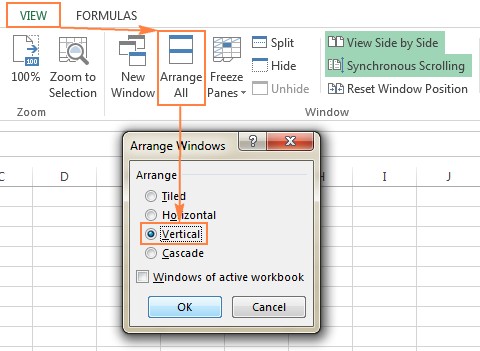
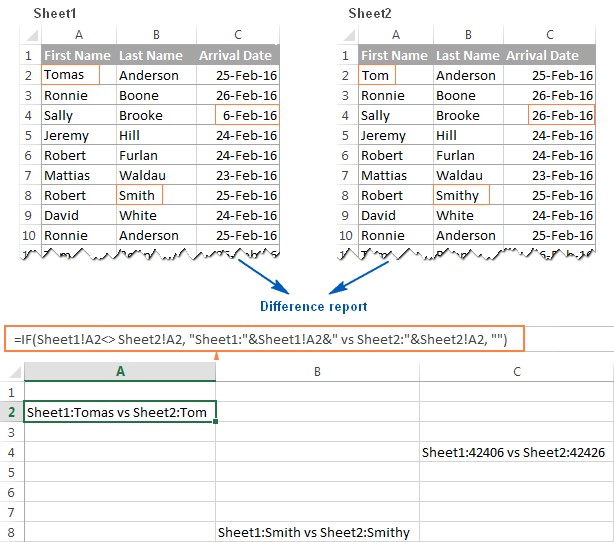
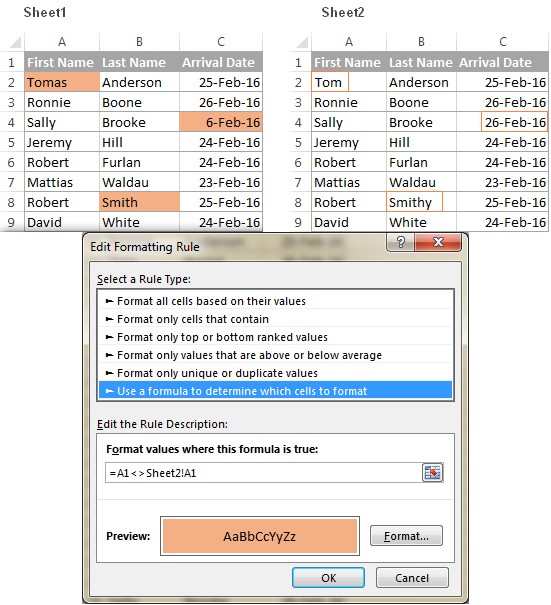
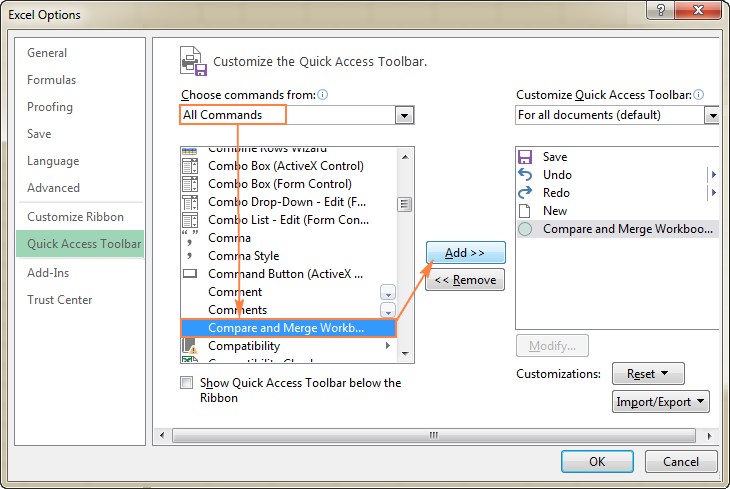
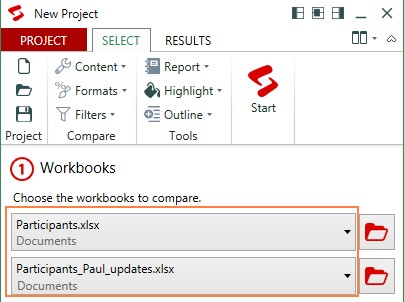
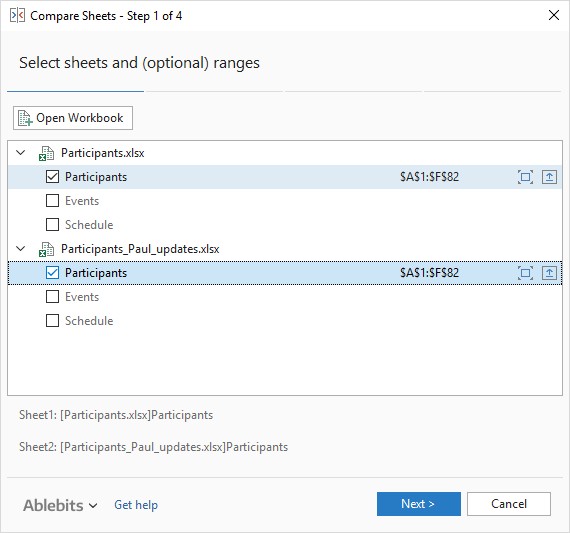
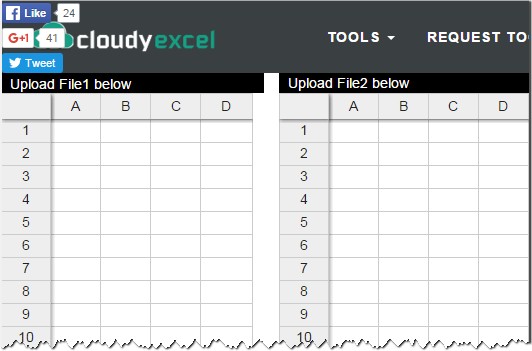
9. Frequently Asked Questions (FAQ)
- How do I compare two sheets in Excel to find differences? You can use the View Side by Side feature, Excel formulas, conditional formatting, or third-party tools like Synkronizer Excel Compare or Ablebits Compare Sheets.
- Can I compare two Excel files without installing any software? Yes, you can use online services like XLComparator or CloudyExcel.
- How can I highlight differences between two sheets in Excel? Use conditional formatting with a formula like
=A1<>Sheet2!A1to highlight cells with different values. - What is the best way to compare two large Excel files? Third-party tools like Synkronizer Excel Compare or Ablebits Compare Sheets are recommended for their advanced features and efficiency.
- How do I merge changes from different copies of a shared Excel workbook? Use the Compare and Merge Workbooks feature in Excel.
- Can I compare formulas in two Excel sheets? Yes, third-party tools like Synkronizer Excel Compare and xlCompare can compare formulas.
- Is it possible to ignore case when comparing two Excel sheets? Some third-party tools offer options to ignore case during comparison.
- How do I find duplicate records between two Excel sheets? Tools like xlCompare can identify and remove duplicate records.
- What should I do if the Compare and Merge Workbooks command is greyed out? Ensure you are trying to merge copies of the same shared workbook, not different Excel files.
- Are online Excel comparison tools secure? Exercise caution when using online tools, especially with sensitive data, as security can vary.
10. Conclusion
Comparing two sheets in Excel can be achieved through various methods, each with its advantages and limitations. Whether you opt for simple side-by-side viewing, Excel formulas, conditional formatting, or advanced third-party tools, the key is to choose the method that best suits your specific needs. Visit COMPARE.EDU.VN for more detailed guides and comparisons to make informed decisions.
If you’re looking for a detailed and objective comparison to help you make the right decision, visit COMPARE.EDU.VN today. Our comprehensive guides provide the insights you need to choose the best option for your needs.
For further assistance or inquiries, please contact us at:
- Address: 333 Comparison Plaza, Choice City, CA 90210, United States
- WhatsApp: +1 (626) 555-9090
- Website: compare.edu.vn
